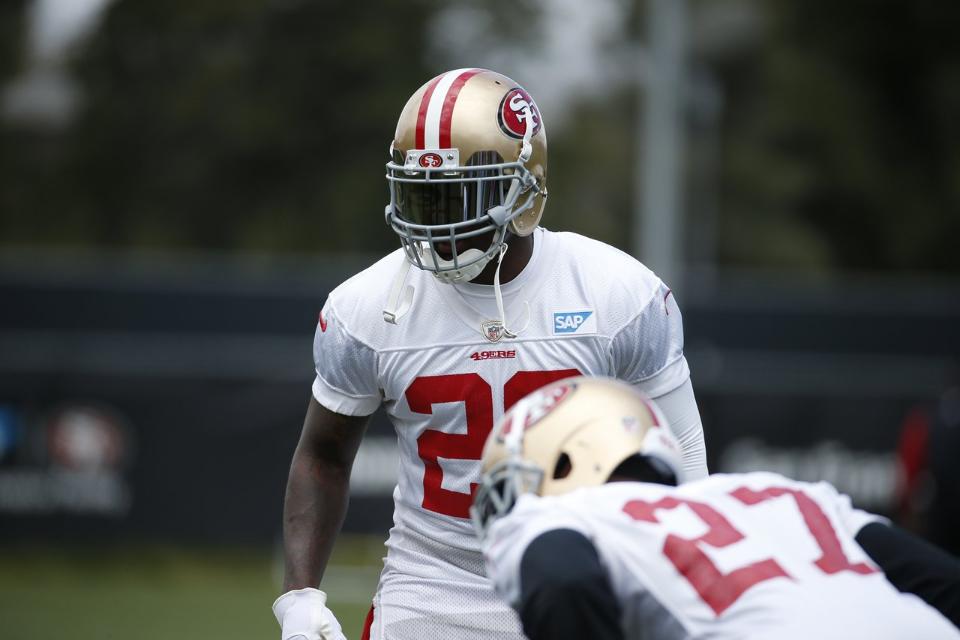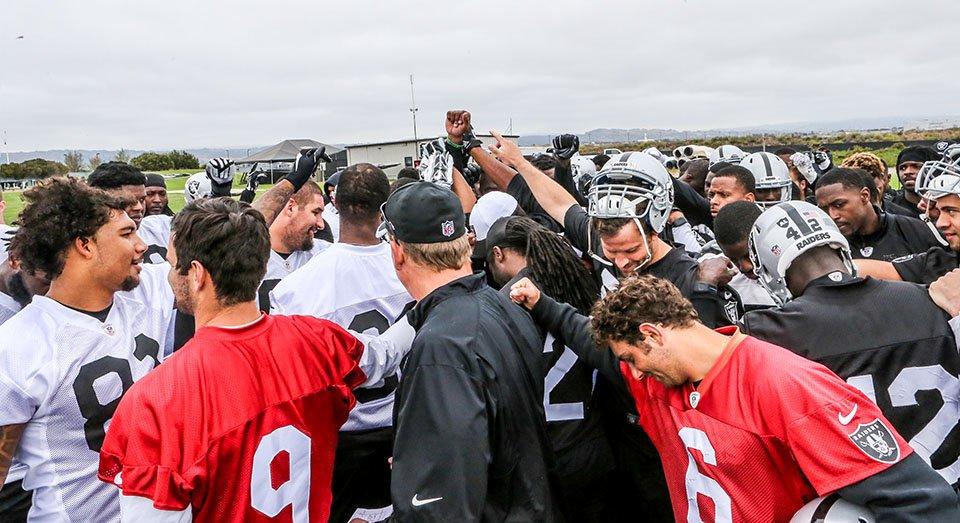NFL Organized Team Activities take on added importance in shortened offseason
In parenthood, the desire for one’s children to “play well with others” resonates deeply, especially for a football-loving father raising two young children. Football, at its core, epitomizes the essence of teamwork.
Despite the annual spectacle of NFL roster scrutiny, distinguishing successful teams from the rest hinges on their ability to harmonize on the field rather than boasting a roster of individual talents.
A striking illustration of this truth is in the 2014 Chicago Bears, a team teeming with offensive prowess featuring stars like Matt Forte, Brandon Marshall, Alshon Jeffery, and Martellus Bennett.
Irrespective of personal opinions on Jay Cutler, the team’s offense ranking a modest 23rd in the NFL’s scoring charts is a stark reminder that the sheer presence of individual talents does not garner points.
This inconvenient reality challenges the prevailing narratives of free agency and draft fervor. Ultimately, success is less about the marquee names on the roster and more about the seamless cohesion they achieve.
Both coaches and players are acutely aware of this principle, underscoring the significance of the off-season sessions in the post-2011 Collective Bargaining Agreement (CBA) era, characterized by truncated off-season schedules.
As NFL teams transition from rigorous weightlifting and on-field conditioning to quasi-football training sessions this week, the accelerated team formation process takes center stage.
The following outlines the fundamental aspects that occupy the attention of teams across the league as they embark on Organized Team Activities (OTAs):
LEARNING
For those observing the NFL from beyond the confines of an organization, the notion of players having to “reacquaint” themselves with their playbooks during the spring and summer might seem peculiar.
After all, it’s only been a brief hiatus from the playing field.
Yet, with the perspective of nine offseasons under their belt, the reality becomes apparent. Every offensive and defensive scheme, regardless of a player’s experience, harbors its quirks and intricacies that necessitate this process of “relearning.”
In the NFL, each team possesses its distinct approach to reintroducing the extensive playbook, primarily focusing on laying the foundational elements of their respective systems during Organized Team Activities (OTAs).
As these sessions unfold over the upcoming days and weeks, players receive designated segments of the playbook to absorb, which are subsequently implemented through simulated (non-contact) plays on the field.

While the perspective primarily centers on defensive operations, the procedures for absorbing the playbook tend to adhere to a standardized approach among the teams I’ve had the privilege to be a part of.
These structured routines revolve around the incremental introduction of fundamental defensive fronts and coverages, followed by their amalgamation in diverse permutations against various offensive formations and personnel groups.
A substantial portion of OTAs unfold within the confines of a classroom, where players delve into the intricacies of the playbook.
However, the actual litmus test unfolds on the field as coaches scrutinize between cognitive comprehension and physical execution.
This is particularly pertinent when the offense is immersed in its learning process, which may manifest in ways that significantly differ from what the defense encountered in the classroom.
A core aspect of preparing for the inherent unpredictability of the game hinges on OTAs.
Here, players learn rules and concepts that apply to many scenarios, requiring them to process and apply these principles swiftly in real-time situations.
Mastering these foundational elements during this time of the year is the bedrock upon which the intricate game-planning strategies are later built.
Communication
This is the juncture at which players often experience significant mental strain.
Having a firm grasp of one’s designated responsibilities within a formation like Base (4-3) Cover 2 is one thing. Still, the challenge intensifies when faced with the dynamic nature of the game. What happens when the offensive formation undergoes a sudden shift?
How do you react to unexpected motion or the transition to an empty backfield? These are just a few examples of the myriad unanticipated scenarios that offensive coaches conjure during the tranquil months of the NFL offseason.

Amidst the expected influx of fresh faces on both sides of the ball, a perennial occurrence in the NFL, OTAs are a crucial platform for on-field discussions.
These sessions offer an opportunity to establish a seamless rapport and navigate the intricate dialogue that precedes and accompanies football plays.
If there’s one imperative takeaway for a defense emerging from NFL OTAs, it is the mastery of effective communication. Given the heightened emphasis on non-contact drills, the cognitive and vocal aspects of communication take center stage.
No individual defender can encompass the entirety of an offensive play, underscoring the importance of establishing trust and understanding among teammates and effectively filling in the informational gaps.
Football revolves around the art of anticipation and swift reactions. Playing alongside a skilled communicator can elevate a player’s performance.
Conversely, sharing the field with a teammate who struggles to communicate can pose a significant impediment to one’s effectiveness.
A player’s ability to communicate with their teammates during gameplay is a pivotal aspect.
OTAs provide a relatively safe environment to nurture this trait, allowing players to gain confidence in executing new schemes before extending beyond the scope of their responsibilities.
This period presents an opportune moment for a defense to enhance its cohesion, with the continuity and growth of communication positions, primarily the linebacker and safety roles, holding the potential to catalyze significant improvements in the defensive unit’s performance.
CAMARADERIE
While it may sound cliché, these off-season sessions serve as the crucible for team cohesion.
With the contemporary Collective Bargaining Agreement reducing the physical demands of off-season camps, there might be a temptation to undervalue their significance, deeming them as non-authentic football experiences with little weight.
Indeed, most of these sessions may mirror pseudo-football, yet they remain a pivotal element in fostering the team’s unity.
Training alongside teammates, engaging in collective problem-solving, weathering the stern guidance and trials posed by the coaching staff – these represent the bedrock of the off-season.

In professional football, the symphony of defense and offense hinges on the seamless unity of players, necessitating a profound level of trust and camaraderie among teammates.
Exceptional individual talents can still falter within a team if that vital cohesion is absent.
Sacrifice is an intrinsic element of playing within any NFL scheme, and developing a genuine rapport with one’s teammates eases the process of making those sacrifices feel organic.
This unity becomes particularly invaluable as the season progresses and the stakes heighten in the fall.
NFL locker rooms encompass an array of personalities, ensuring that each year brings the possibility of playing alongside individuals markedly distinct from the previous season.
While the mantra remains to “do your job,” the execution of that task is considerably smoother when there exists a bond with those you work alongside.
In a sense, OTAs can be likened to corporate training sessions, albeit without the theatrics of trust falls.
The value, though not immediately conspicuous, is undeniable. The least desirable scenario is arriving at a training camp with a collection of individuals who have yet to merge into a cohesive team.
OTAs mark the NFL players’ first opportunity to engage in anything remotely resembling football during the off-season, thus earning a well-deserved spot on the yearly calendar.
These sessions are not trials or physical tests of real football, so outward observations offer limited insights into a team’s prospects in the upcoming days and weeks.
In professional football, the adage “you have to walk before you can run” holds, and this is precisely the purpose that NFL OTAs aim to fulfill.

